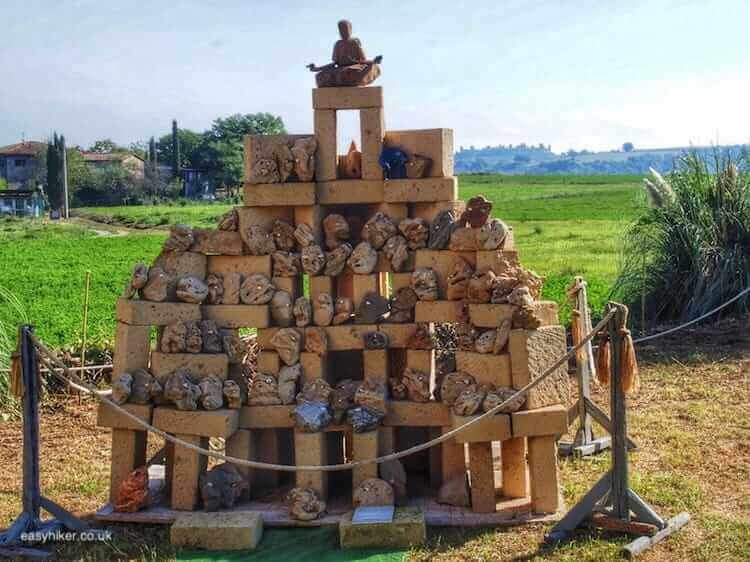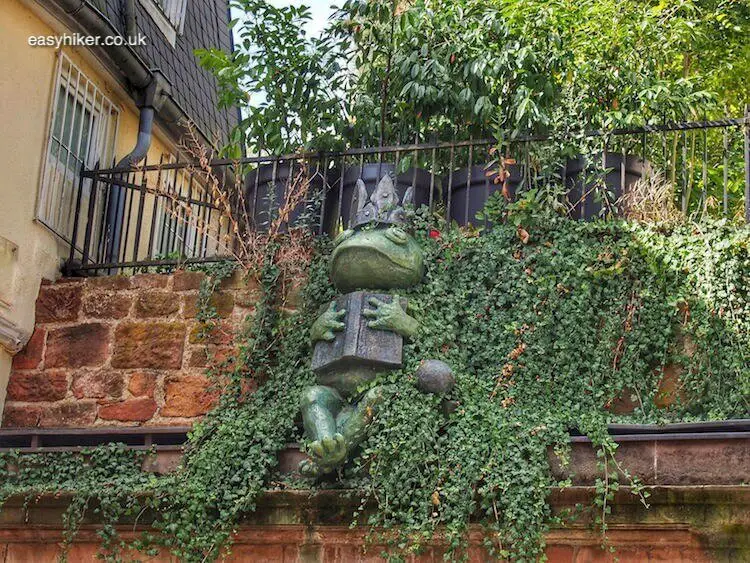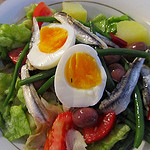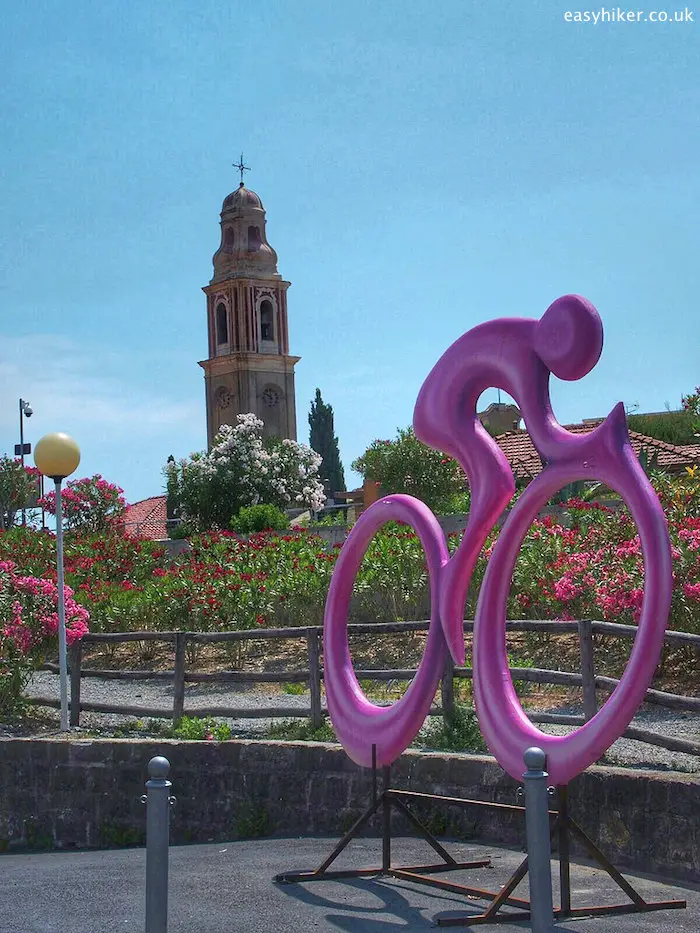No account of Orta would be complete without a piece on its most eye-catching feature: the island of San Giulio that sits a few hundred meters away from the town in the middle of the lake, mounted like a precious stone on a shimmering expanse of blue.

Generally speaking, it is a good idea to do a little homework before visiting a place, but sometimes it can also pay off to come totally unprepared, giving your destination a chance to catch you by surprise.
When we took the ferry from Orta to the island of San Giulio, we had assumed – as a matter of course – that we would find a nearly seamless continuation of the tourist circus on the mainland, a kind of Orta-sur-Lac with lakeview restaurants, ice cream parlours and souvenir shops.
In fact, nothing could have been further from the truth.

One of the first things that we noticed after stepping off the ferry was a panel which told us that we were about to enter an “Island of Silence”.
This summarizes pretty well what you can expect to experience on San Giulio. There is no noise because nobody is there to make it. Few ordinary people live within the island’s narrow confines: there are some holiday homes, but most of the inhabitants are – in one way or another – connected to the Benedictine abbey, including contemplative nuns who are said to never leave their convent at all.
So the loudest sound we heard all day was a monk tapping on the keys of his mobile phone.

San Giulio had always been designed as a holy place. According to legend, the evangelist Julius – later to become San Giulio – had made a vow to build 100 churches in Northern Italy. He had already completed 99 when he first set eyes on the island in the middle of Lake Orta and decided instantly that this would become the site of his final work.
Not having a boat to cross the water, he – the legend says – spread his cloak on the lake and walked across, cast out the dragons and snakes which had infested the place, built a church, lay down and died.
The saint’s grave can still be visited in the crypt of the Romanesque basilica that eventually replaced San Giulio’s 5th century chapel.

San Giulio did not, however, remain an oasis of peace and quiet for long. It only took the local warlords a few years to realize that the island could easily be developed into a nearly impregnable stronghold, and fortifications were added already a few decades after San Giulio’s death.
Many bloody battles were fought over the island in the following centuries until the Bishops of Novarra regained control in 962. They have – in one way or another – remained in charge ever since.
Despite the island’s long history, much of San Giulio’s building fabric only dates back to the 1840 when most of the old buildings were razed to make way for the large seminary.
The medieval basilica, however, survived …

… and there are many material reminders of religious and cultural traditions elsewhere that reach back to antiquity and the early middle ages.

The atmosphere in the walkways of the island, at any rate, does not appear to have changed significantly over the past 1000 years.

We only met a handful of people all day in San Giulio, but I am willing to admit that this may have had something to do with the rain which was coming down in buckets on the day we visited, so much so that we had to interrupt our walk around the island several times and wait in a doorway or under a balcony until the storm took a bit of a breather.
Obviously, this was not the weather we would have chosen for our outing, but looking back on the pictures that we took that day, the unusual light and atmospheric conditions seem to have had some fortunate side-effects, too.
They certainly did something to San Giulio’s yellows …

… and made the stony greys appear somewhat greyer still, ensuring that the occasional dabs of colour would stand out even more.
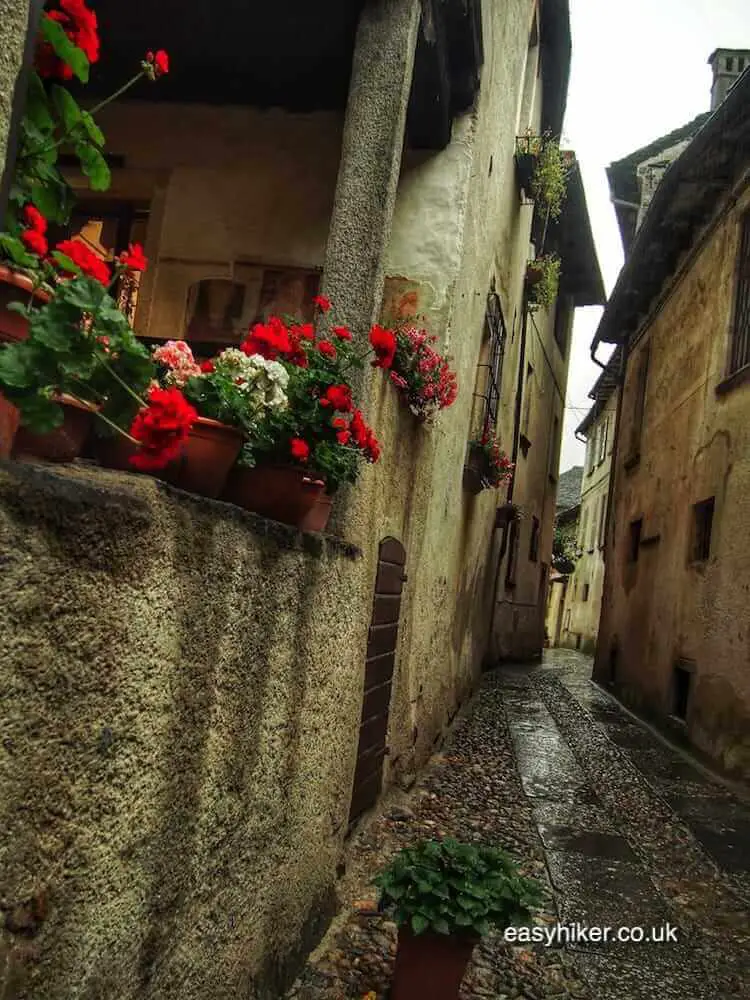
San Giulio is small, not significantly larger than a couple of soccer pitches laid out back-to-back. There is, in essence, just a single street on the island: the path that guides you once along San Giulio’s outer perimeter and around the seminary which occupies the centre.

Occasionally, side streets lead down to the lakeshore …

… or open up views across lush back gardens.

San Giulio certainly does not leave you many alternatives. There is only one way around and also only one way to get there: which is by ferry.

Simply buy a ticket from one of the vendors on the quay near Orta’s town square and board the next ferry that is ready to depart.
From San Giulio, you can then – after you have completed your tour of the island – continue your exploration of Lake Orta by taking another ferry to Pella, the village opposite Orta on the western shore.
This is certainly what we would have done – if only the weather had been a little kinder and we had been a little less drenched.
Well, at least that gives us a reason to come back to the area to catch another dose of San Giulio’s otherworldly beauty.



